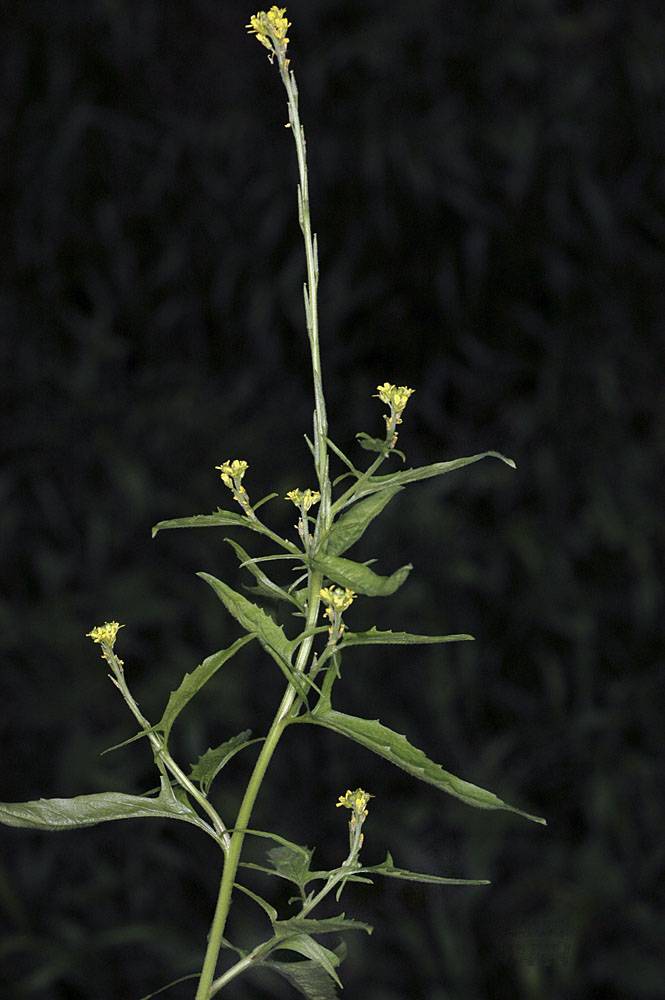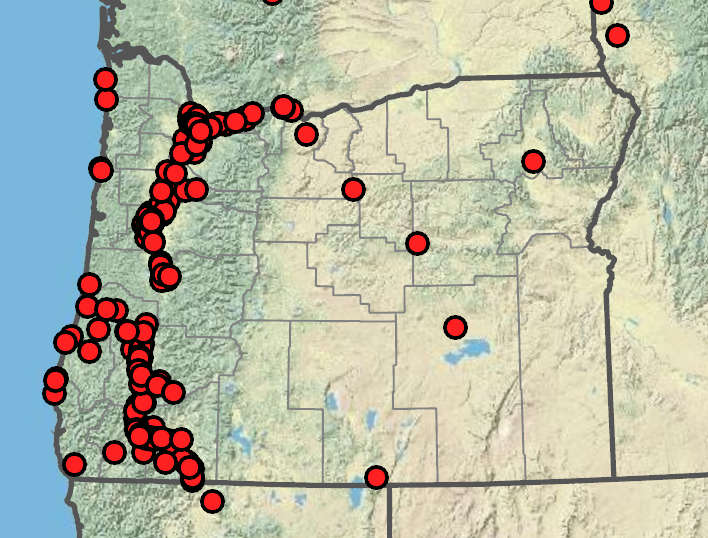Sisymbrium officinale
hedge mustard
2.5–7.5(11) dm.
usually rosulate;
blades (2)3–10(15) × (1)2–5(8) cm, lyrate-pinnatifid; pinnatisect, or runcinate;
lateral lobes 2–4(5) per side;
margins entire, dentate, or lobed;
petioles (1)2–7(10) cm.
similar to basal; uppermost leaves smaller, lobed, dentate, or subentire.
bracts 0, fruiting pedicels erect, appressed to rachis; stout, 1.5–3(4) mm; narrower than fruits.
sepals erect, 2–2.5 mm;
petals spatulate, 2.5–4 × 1–2 mm;
claws 1–2 mm;
ovules 10–20 per ovary;
styles (0.8)1–1.5(2) mm;
stigmas slightly 2-lobed.
appressed to rachis, slightly torulose or not; terete; stout; straight subulate-linear; (0.7)1–1.4(1.8) cm × 1–1.5 mm;
valves glabrous or pubescent.
oblong, 1–1.3 × 0.5–0.6 mm.
=14.
Sisymbrium officinale
Fields, roadsides, pastures, disturbed areas, deserts. Flowering Mar–Aug. 0–1900 m. Casc, CR, Est, Sisk, WV. CA, ID, NV, WA; scattered throughout North America; Africa, Asia, Europe. Exotic.
Ihsan Al-Shehbaz
- Local floras:
BC,
CA,
OR,
WA
- Local Web sites:
CalFlora,
CalPhotos,
Flora NW,
PNW Herbaria,
Turner Photog.
WildflowerSearch
iNaturalist (observations)
USDA Plants Database
- LBJ Wildflower Center
- SEINet
- Plants of the World Online
- Encyclopedia of Life
- Wikipedia
- Google Image Search



